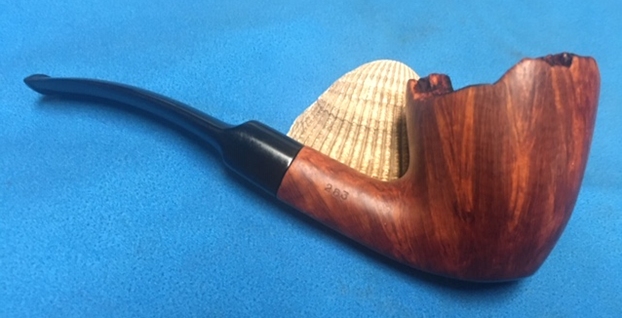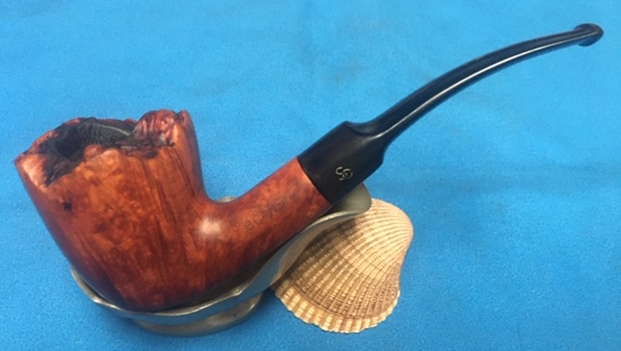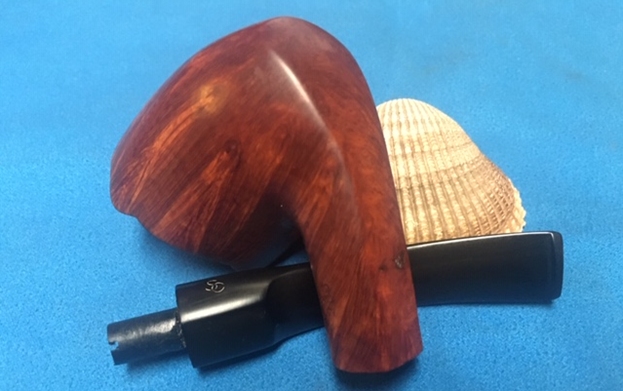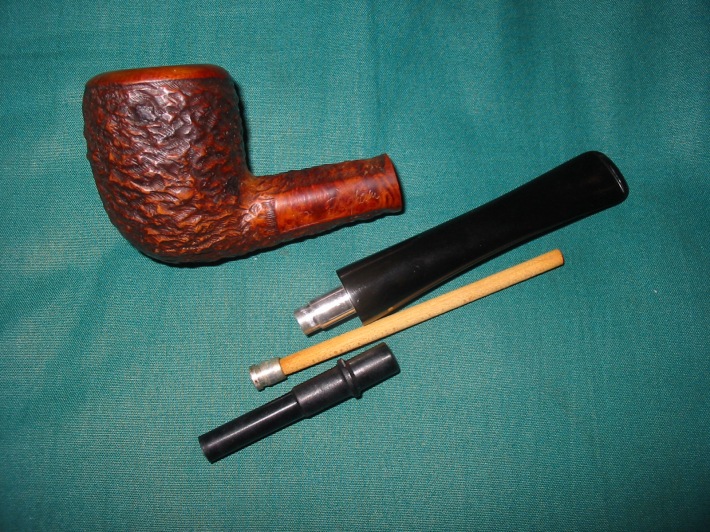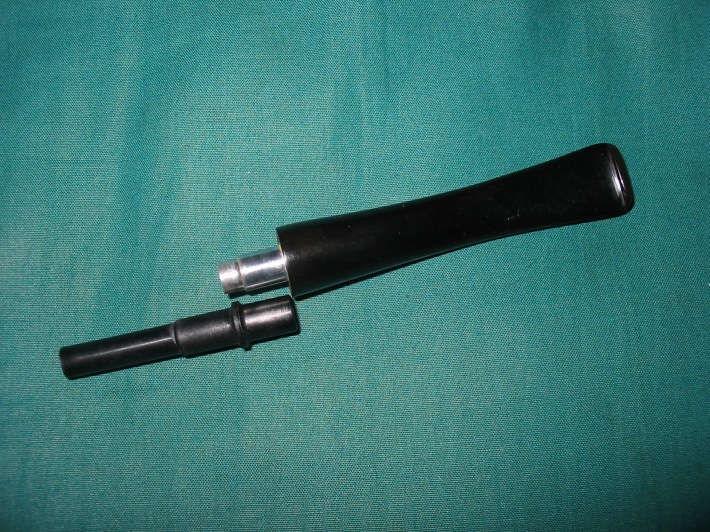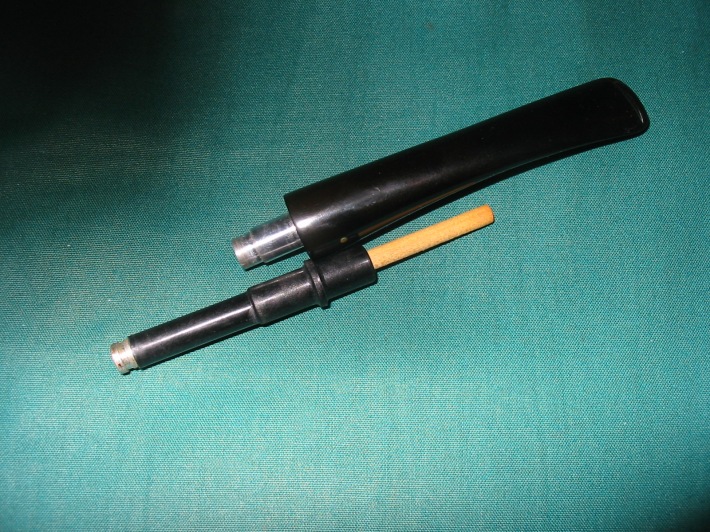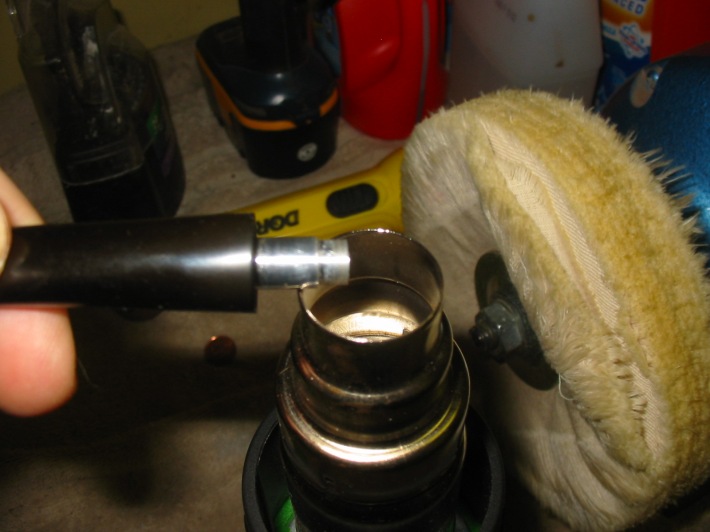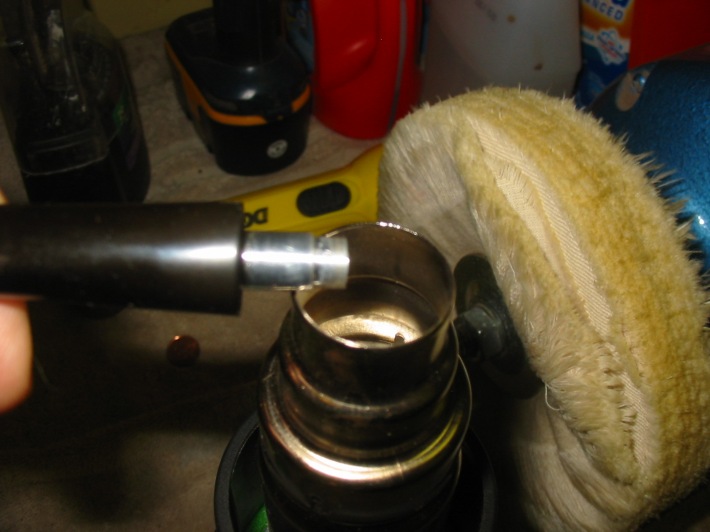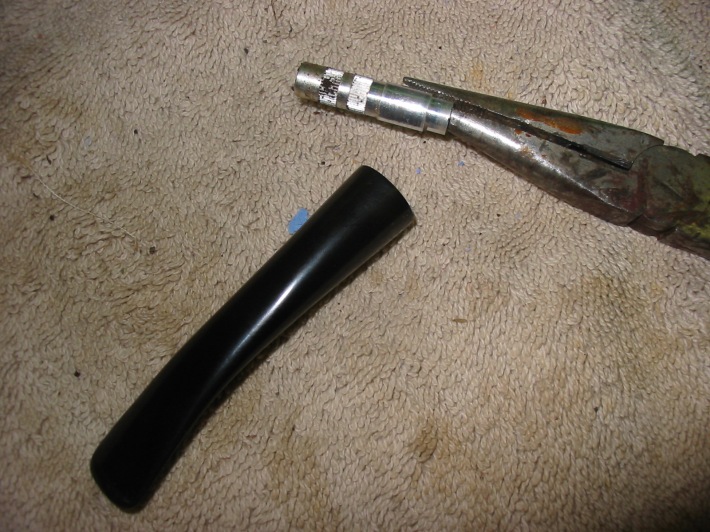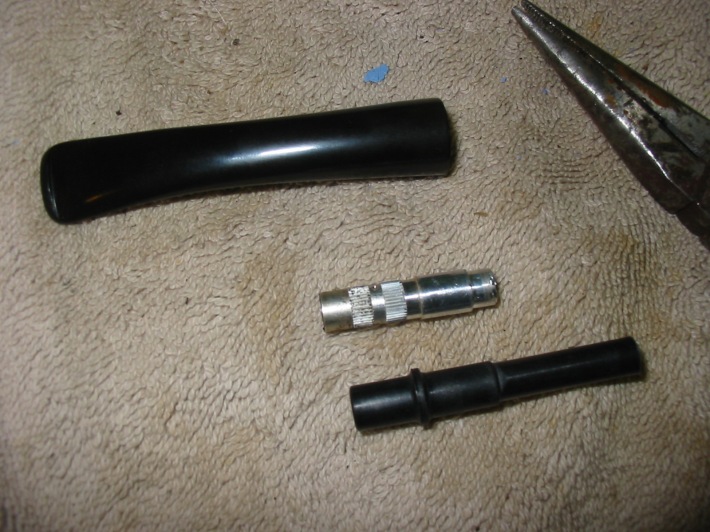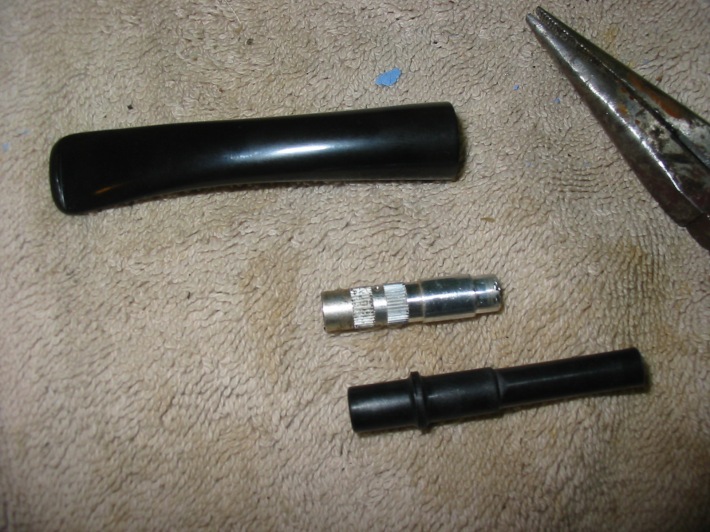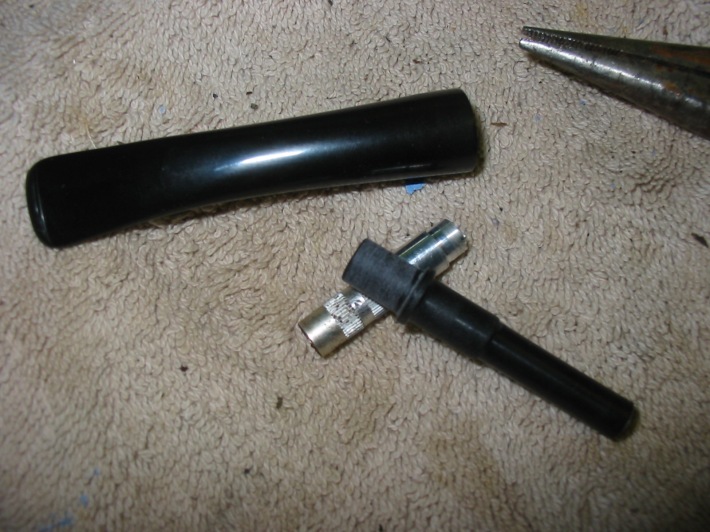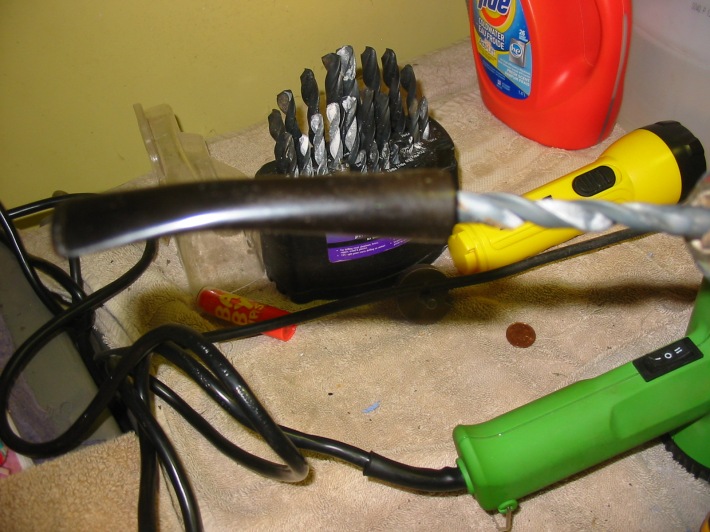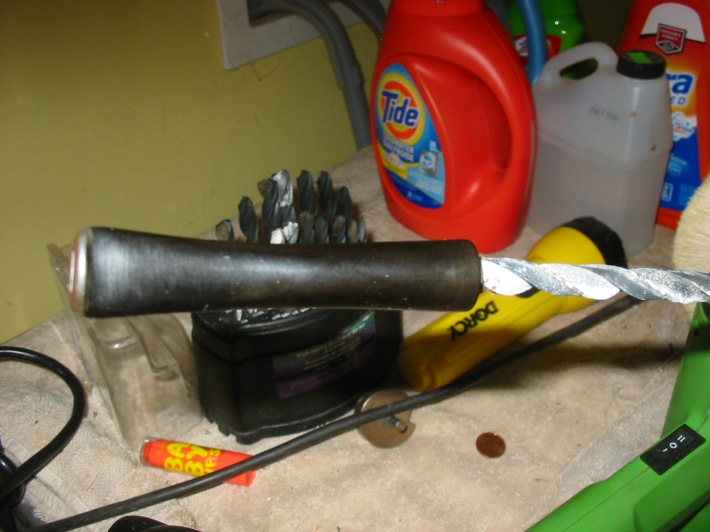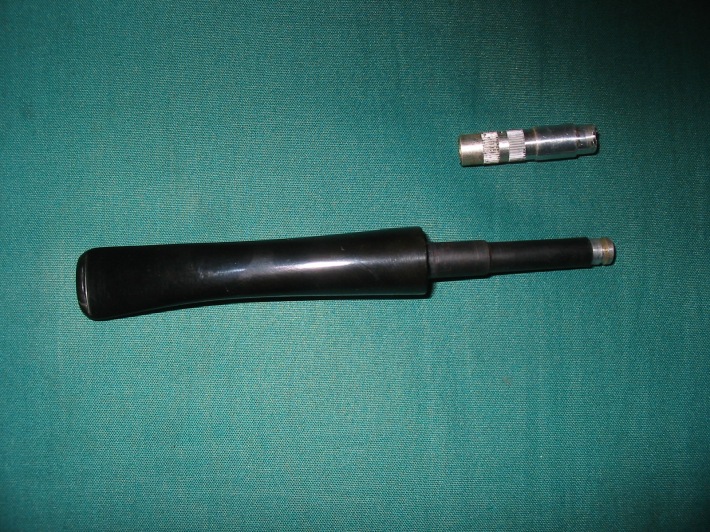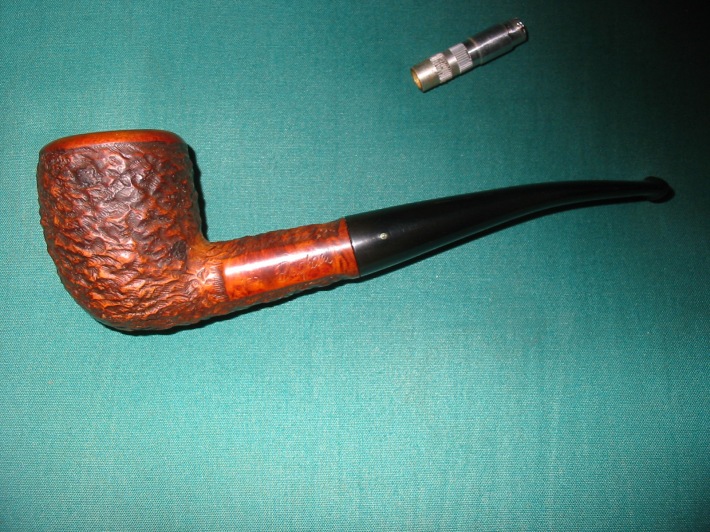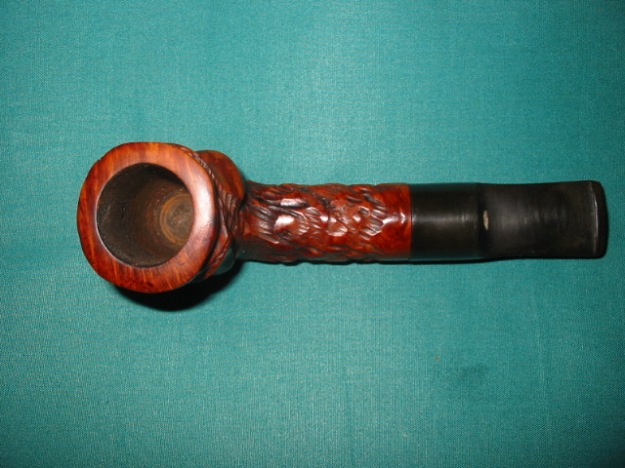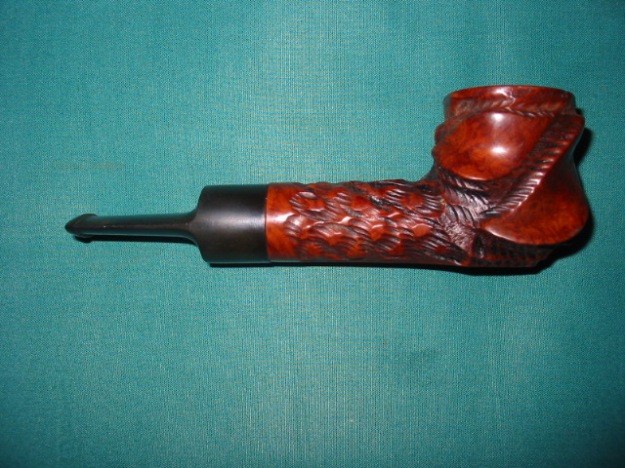Blog by Steve Laug
I am currently not taking on anymore restoration work from the internet or groups that I am part of on Facebook because of the large amount of estate pipes that I am working on to sell. But I have my name in at a local pipe shop here in Vancouver, British Columbia to do repair work for the shop as it comes in. there are no other pipe repairers in Western Canada that I am aware of so I feel a bit of an obligation to take care of these folks as they come. Fortunately there are not a lot of referrals but periodically they get pipemen or women stopping by with work – that is where I come in. They give them my number and email and then the repair work is between us. On Wednesday this week I received an email from one of their customers, Ron in Victoria, B.C. about a pipe that had been dropped and had a broken tenon. He described the broken stem and that left me with some questions. I had him send me photos of the broken pipe so I would be sure to have a clear picture of the issues. He said that the shank was not cracked and really the only issue was the tenon. He send the photos below so I could see what he was speaking of. Not too big an issue really – a cleanup and tenon replacement and the pipe would be good to go. After our emails back and forth he put it in the mail to me. It arrived on Friday and I took it out of the box to see what I was going to be dealing with on this pipe. Descriptions and photos are one thing but I like to have the pipe in hand to examine for myself. This is what I saw. The pipe was dirty and dull looking. There was some faint stamping on both sides of the shank. It was stamped Scandia over Made in Denmark on the left side and had the shape number 263 on the right side. There was a very uneven cake in the bowl that was crumbling. The tenon had snapped off almost smooth against face of the stem. The stem had some tooth marks and was oxidized. There was a faint SC on the left side of the saddle. It appeared that someone had tried to glue the tenon back on the stem – unsuccessfully. There was a lot of sloppy glue on the end of the stem and tenon. I took some photos of the pipe as it looked when it arrived. He had taped the broken tenon on the underside of the stem. The bowl itself was dirty with a crumbling cake about half way up the bowl from the bottom. The plateau rim top had tars and some darkening on the right top and edges. There was a large sandpit on the left side of the bowl near the rim and one on the underside of the shank that would need to be dealt with.
After our emails back and forth he put it in the mail to me. It arrived on Friday and I took it out of the box to see what I was going to be dealing with on this pipe. Descriptions and photos are one thing but I like to have the pipe in hand to examine for myself. This is what I saw. The pipe was dirty and dull looking. There was some faint stamping on both sides of the shank. It was stamped Scandia over Made in Denmark on the left side and had the shape number 263 on the right side. There was a very uneven cake in the bowl that was crumbling. The tenon had snapped off almost smooth against face of the stem. The stem had some tooth marks and was oxidized. There was a faint SC on the left side of the saddle. It appeared that someone had tried to glue the tenon back on the stem – unsuccessfully. There was a lot of sloppy glue on the end of the stem and tenon. I took some photos of the pipe as it looked when it arrived. He had taped the broken tenon on the underside of the stem. The bowl itself was dirty with a crumbling cake about half way up the bowl from the bottom. The plateau rim top had tars and some darkening on the right top and edges. There was a large sandpit on the left side of the bowl near the rim and one on the underside of the shank that would need to be dealt with. 

 I removed the taped on broken tenon from the stem. I used a Dremel and sanding drum to take down the sharp edges of the old tenon remaining on the face of the stem. I wiped the face down with acetone on a cotton swab to remove the old glue. It was a sticky mess but came off quite easily with the acetone. When it was clean I used a series of drill bits to drill out the airway to accommodate the new threaded tenon. I usually start with a drill bit slightly larger than the airway and work my way up to the one that fits the tenon end. I used my cordless drill and the airway as the guide for each successive drill bit. This keeps things lined up.
I removed the taped on broken tenon from the stem. I used a Dremel and sanding drum to take down the sharp edges of the old tenon remaining on the face of the stem. I wiped the face down with acetone on a cotton swab to remove the old glue. It was a sticky mess but came off quite easily with the acetone. When it was clean I used a series of drill bits to drill out the airway to accommodate the new threaded tenon. I usually start with a drill bit slightly larger than the airway and work my way up to the one that fits the tenon end. I used my cordless drill and the airway as the guide for each successive drill bit. This keeps things lined up. Once I have the airway drilled to accommodate the end of the tenon. I use a tap to thread new airway. The tenon replacements I use have a hip around the middle that I need to take down. I use a Dremel and sanding drum to smooth things out. I also rough up the threads to reduce the diameter to make room for the glue that I use to set the tenon in the stem.
Once I have the airway drilled to accommodate the end of the tenon. I use a tap to thread new airway. The tenon replacements I use have a hip around the middle that I need to take down. I use a Dremel and sanding drum to smooth things out. I also rough up the threads to reduce the diameter to make room for the glue that I use to set the tenon in the stem. I used a needle file to smooth out the slight ridge at the end of the tenon. I sanded the tenon smooth to clean up the fit. I would further polish it once it was in place in the stem. I dribbled some Krazy glue on the threads and quickly turned it into the stem making sure that the alignment was correct.
I used a needle file to smooth out the slight ridge at the end of the tenon. I sanded the tenon smooth to clean up the fit. I would further polish it once it was in place in the stem. I dribbled some Krazy glue on the threads and quickly turned it into the stem making sure that the alignment was correct. I took photos of the new tenon before I polished and finished it. The tenon is solid and the alignment in the shank is perfect. I set it aside to cure and turned my attention to the bowl.
I took photos of the new tenon before I polished and finished it. The tenon is solid and the alignment in the shank is perfect. I set it aside to cure and turned my attention to the bowl. With the stem repaired I remembered that Ron had asked me to give him some background information on the brand so I paused at this point to gather the info. I turned to Pipephil’s site (http://www.pipephil.eu/logos/en/logo-s4.html) to get a quick overview. As expected the Scandia brand is a Stanwell second line. In this case the sandpits make it clear why it has this designation. I have included a screen capture of the pertinent section from the site.
With the stem repaired I remembered that Ron had asked me to give him some background information on the brand so I paused at this point to gather the info. I turned to Pipephil’s site (http://www.pipephil.eu/logos/en/logo-s4.html) to get a quick overview. As expected the Scandia brand is a Stanwell second line. In this case the sandpits make it clear why it has this designation. I have included a screen capture of the pertinent section from the site. I turned then to the section on Pipedia that dealt with the Stanwell Sub-brands the Scandia pipe listed there (https://pipedia.org/wiki/Stanwell#Sub-brands_.2F_Seconds). I followed several other links listed on the article to check who designed this particular shape for Stanwell (https://pipedia.org/wiki/Stanwell_Shape_Numbers_and_Designers). Bas Stevens, a dear friend who know longer is living compiled a list of the shape numbers and their designer. The 263 was not listed there however, I remembered that the shape was actually a Stanwell shape 63. That shape was a Freehand with a plateau top and a saddle mouthpiece and was designed by Sixten Ivarsson.
I turned then to the section on Pipedia that dealt with the Stanwell Sub-brands the Scandia pipe listed there (https://pipedia.org/wiki/Stanwell#Sub-brands_.2F_Seconds). I followed several other links listed on the article to check who designed this particular shape for Stanwell (https://pipedia.org/wiki/Stanwell_Shape_Numbers_and_Designers). Bas Stevens, a dear friend who know longer is living compiled a list of the shape numbers and their designer. The 263 was not listed there however, I remembered that the shape was actually a Stanwell shape 63. That shape was a Freehand with a plateau top and a saddle mouthpiece and was designed by Sixten Ivarsson.
To verify that my memory was correct I did a quick Google search for images of the shape 63 for comparison purposes. I include the photo below with thanks to http://www.Bollitopipe.it for the image (https://www.bollitopipe.it/en/hand-made-polished-royal-guard/18983-stanwell-royal-guard-63-bark-top.html). You can see that the shape is identical so that it is clear that the 263 and the 63 are the same shapes. With the background information gathered and summarized I turned my attention to the cleanup of the bowl. I reamed the crumbling and uneven cake out of the bowl. I left a very thin cake on the walls of the bowl. I cleaned up the small bits toward the bottom of the bowl with a Savinelli Fitsall Pipe knife. I finished by smoothing out the slight cake on the walls with a piece of 220 grit sandpaper wrapped around some doweling.
With the background information gathered and summarized I turned my attention to the cleanup of the bowl. I reamed the crumbling and uneven cake out of the bowl. I left a very thin cake on the walls of the bowl. I cleaned up the small bits toward the bottom of the bowl with a Savinelli Fitsall Pipe knife. I finished by smoothing out the slight cake on the walls with a piece of 220 grit sandpaper wrapped around some doweling. 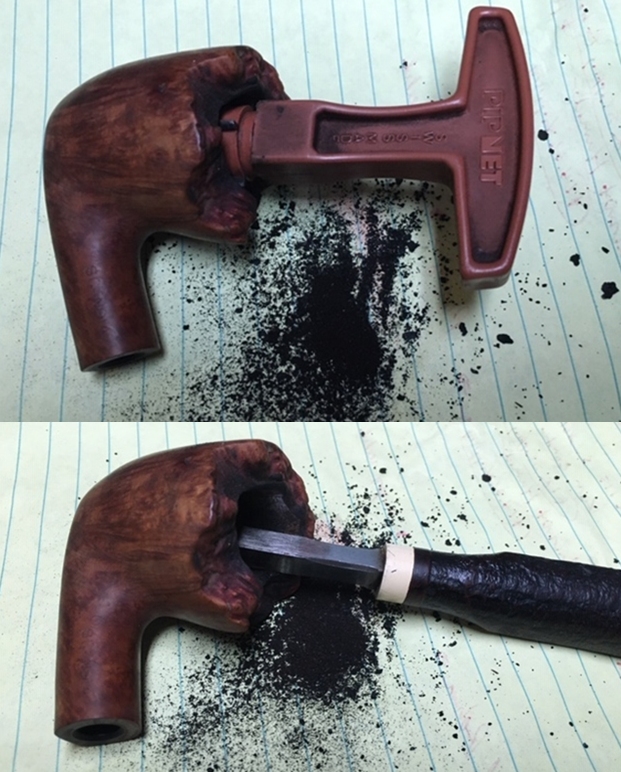
 I a soft bristle brass brush to clean off the debris in the plateau finish on the rim top. I was able to remove most of the darkening at the same time. While not flawless it looks significantly better.
I a soft bristle brass brush to clean off the debris in the plateau finish on the rim top. I was able to remove most of the darkening at the same time. While not flawless it looks significantly better. To clean the surface of the briar and remove the oils and dirt I scrubbed the briar with a tooth brush and undiluted Murphy’s Oil Soap. I rinsed off the bowl under warm water and dried it off with a soft cotton cloth. The finish looks much better with stunning grain. The sandpits are quite visible now that the pipe is clean.
To clean the surface of the briar and remove the oils and dirt I scrubbed the briar with a tooth brush and undiluted Murphy’s Oil Soap. I rinsed off the bowl under warm water and dried it off with a soft cotton cloth. The finish looks much better with stunning grain. The sandpits are quite visible now that the pipe is clean.
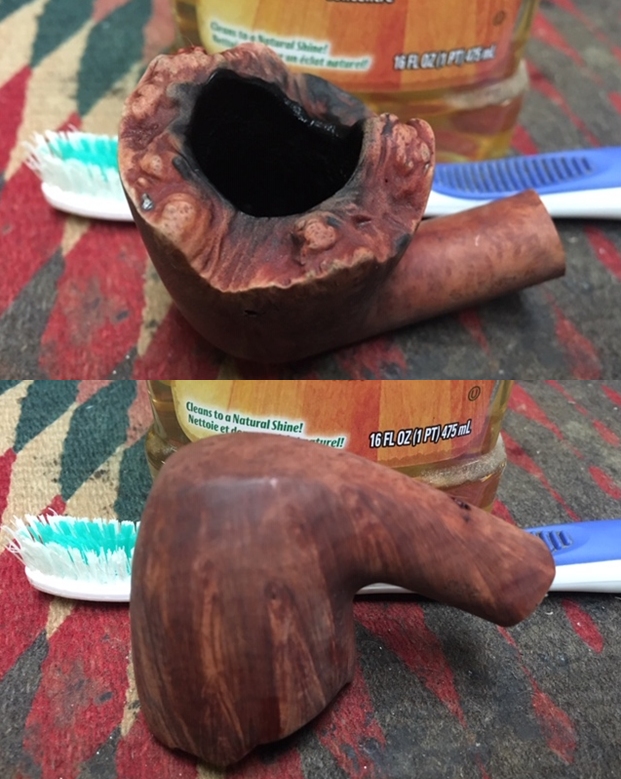 I repaired the sandpits with a few drops of Krazy Glue. I slightly overfill the pit with the glue as it shrinks as it cures. Once the repairs cured I sanded them with 220 grit sandpaper to blend them into the rest of the bowl. I polished the entire bowl with 400 grit wet dry sandpaper in preparation for the micromesh polishing.
I repaired the sandpits with a few drops of Krazy Glue. I slightly overfill the pit with the glue as it shrinks as it cures. Once the repairs cured I sanded them with 220 grit sandpaper to blend them into the rest of the bowl. I polished the entire bowl with 400 grit wet dry sandpaper in preparation for the micromesh polishing.
 I polished the briar with micromesh sanding pads – wet sanding with 1500-12000 grit pads. After each pad I wiped the bowl down with a damp cloth to remove the sanding dust. The photos tell the story.
I polished the briar with micromesh sanding pads – wet sanding with 1500-12000 grit pads. After each pad I wiped the bowl down with a damp cloth to remove the sanding dust. The photos tell the story. 




 I used a black Sharpie pen to darken in the deep grooves on the plateau as it would help to mask the darkening on the right and left side of the rim top and it would highlight and give depth to the finish.
I used a black Sharpie pen to darken in the deep grooves on the plateau as it would help to mask the darkening on the right and left side of the rim top and it would highlight and give depth to the finish. 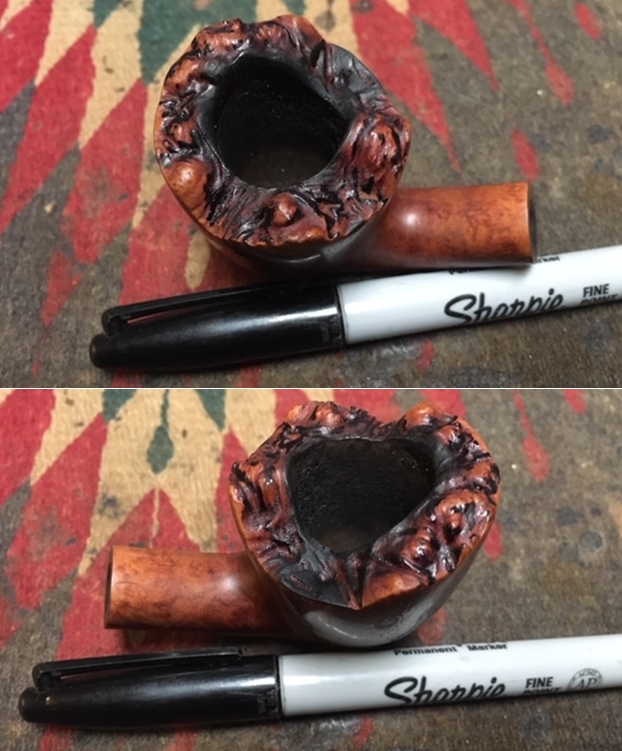
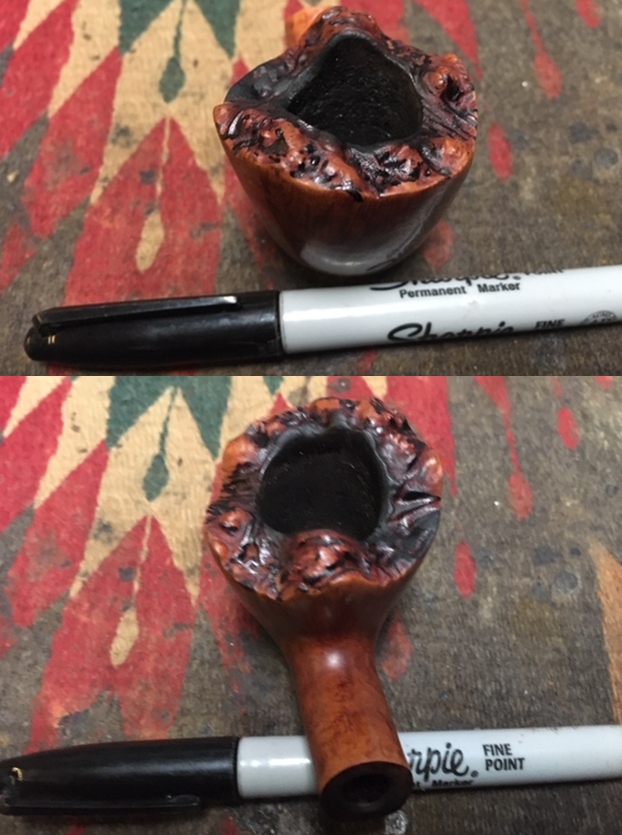 I rubbed the bowl down with Before & After Restoration Balm. I worked it into the surface of the plateau rim top and the rest of the briar with my fingertips and a horsehair shoe brush to clean, enliven and protect it. I let the balm sit for a little while and then buffed with a cotton cloth to raise the shine. I really like watching the Balm do its magic and bring the briar alive.
I rubbed the bowl down with Before & After Restoration Balm. I worked it into the surface of the plateau rim top and the rest of the briar with my fingertips and a horsehair shoe brush to clean, enliven and protect it. I let the balm sit for a little while and then buffed with a cotton cloth to raise the shine. I really like watching the Balm do its magic and bring the briar alive.

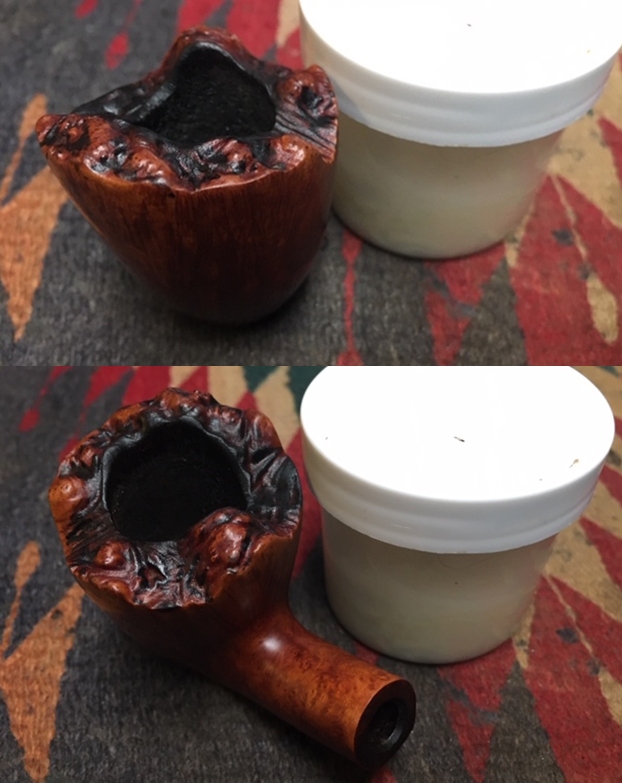 With the bowl finished I turned my attention to polishing the stem. I sanded the surface of the stem with 220 grit sandpaper and 400 grit wet dry sandpaper to remove the remaining oxidation in the vulcanite and the last of the light tooth chatter.
With the bowl finished I turned my attention to polishing the stem. I sanded the surface of the stem with 220 grit sandpaper and 400 grit wet dry sandpaper to remove the remaining oxidation in the vulcanite and the last of the light tooth chatter.  I polished the stem with micromesh sanding pads – wet sanding with 1500-12000 grit pads. I wiped the stem down after each sanding pad with Obsidian Oil.
I polished the stem with micromesh sanding pads – wet sanding with 1500-12000 grit pads. I wiped the stem down after each sanding pad with Obsidian Oil. 
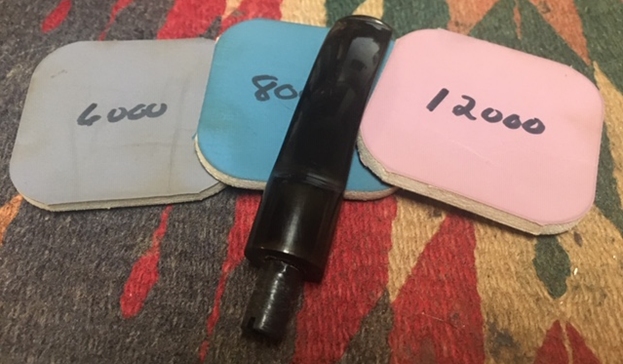 I used some liquid paper to touch up the “SC” on the left side of the stem. I applied it and let it dry and cure. Once it had cured I scraped the excess off with a tooth pick. The “SC” looks very good.
I used some liquid paper to touch up the “SC” on the left side of the stem. I applied it and let it dry and cure. Once it had cured I scraped the excess off with a tooth pick. The “SC” looks very good.  I polished it with Before & After Pipe Stem Polish – both Fine and Extra Fine. Once I had finished the polishing I gave it a coat of a new product I am experimenting with from Briarville Pipe Repair. It is called “No Oxy Oil” and it is made to protect the stem from oxidizing. I set it aside to dry.
I polished it with Before & After Pipe Stem Polish – both Fine and Extra Fine. Once I had finished the polishing I gave it a coat of a new product I am experimenting with from Briarville Pipe Repair. It is called “No Oxy Oil” and it is made to protect the stem from oxidizing. I set it aside to dry. I am happy with how this pipe looks compared to what it looked like when it arrived in pieces. It definitely has that Stanwell look to it – very Danish Freehand looking. I am excited to be on the homestretch with it and took it to the buffing wheel and polished it on the wheel with Blue Diamond to polish out the scratches in the briar and the vulcanite. I gave the bowl and the stem multiple coats of carnauba wax. I buffed the pipe with a clean buffing pad to raise the shine. I hand buffed it with a microfiber cloth to deepen the shine. The pipe polished up pretty nicely. The grain really pops with the wax and polish. The shiny black vulcanite stem is a beautiful contrast to the blacks and browns of the bowl and shank. This Scandia Made in Denmark Freehand was fun to bring back to life. It really is stunning piece of briar whose shape follows the flow of the grain. The pipe is comfortable pipe to hold in the hand. The finished pipe is shown in the photos below. The dimensions of the pipe are Length: 5 ½ inches, Height: 2 inches, Outside diameter of the bowl: 1 ¾ inches, Chamber diameter: ¾ of an inch. This beautiful pipe will be going back to Ron tomorrow. If the mail is as fast as it was bringing it to me he should have it in hand by the first part of the week. I hope that he enjoys this beauty and that it serves him well. Thanks for reading this blog and my reflections on the pipe while I worked on it. This is an interesting one to bring back to life.
I am happy with how this pipe looks compared to what it looked like when it arrived in pieces. It definitely has that Stanwell look to it – very Danish Freehand looking. I am excited to be on the homestretch with it and took it to the buffing wheel and polished it on the wheel with Blue Diamond to polish out the scratches in the briar and the vulcanite. I gave the bowl and the stem multiple coats of carnauba wax. I buffed the pipe with a clean buffing pad to raise the shine. I hand buffed it with a microfiber cloth to deepen the shine. The pipe polished up pretty nicely. The grain really pops with the wax and polish. The shiny black vulcanite stem is a beautiful contrast to the blacks and browns of the bowl and shank. This Scandia Made in Denmark Freehand was fun to bring back to life. It really is stunning piece of briar whose shape follows the flow of the grain. The pipe is comfortable pipe to hold in the hand. The finished pipe is shown in the photos below. The dimensions of the pipe are Length: 5 ½ inches, Height: 2 inches, Outside diameter of the bowl: 1 ¾ inches, Chamber diameter: ¾ of an inch. This beautiful pipe will be going back to Ron tomorrow. If the mail is as fast as it was bringing it to me he should have it in hand by the first part of the week. I hope that he enjoys this beauty and that it serves him well. Thanks for reading this blog and my reflections on the pipe while I worked on it. This is an interesting one to bring back to life.
